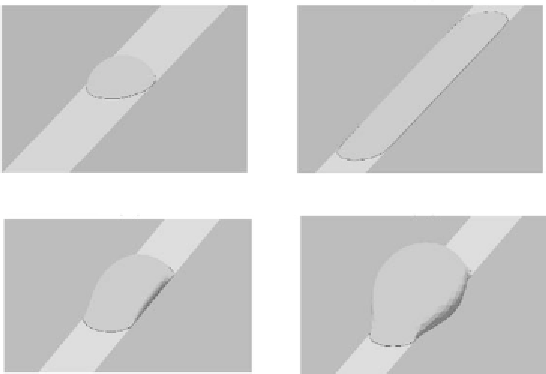Biomedical Engineering Reference
In-Depth Information
Figure 3.62
(a-d) Different shapes of a droplet on a lyophilic band: results of a numerical simula-
tion with Surface Evolver [14].
3.8.2 Drops on Inhomogeneous Surfaces
Young's law has been derived assuming a perfectly flat homogeneous surface. This
is somewhat an abstraction, and surfaces—even when carefully microfabricated—
have some roughness and may not be chemically homogeneous. We investigate in
this section the modifications to Young's law linked to inhomogeneous surfaces.
3.8.2.1 Wenzel's Law
It has been observed that roughness of the solid substrate modifies the contact be-
tween the liquid and the solid. The effect of roughness on the contact angle is not
intuitive. It is surprising that roughness amplifies the hydrophilic or hydrophobic
property of the contact.
We shall not present the derivation of the Wenzel law here. It is classical and the
reader can refer to many topics [8, 10, 34]. Let us denote
q
*
as the contact angle
with the surface with roughness
r
and
q
as the angle with the smooth surface (in
both case, the solid, liquid, and gas are the same).
Figure 3.63
Transverse shape of the droplet in the different morphologies: (a) the drop is a spheri-
cal cap with Young contact angle, (b) the drop has a circular transverse shape with
h
~
L
/2, (c) the
droplet bulge over the hydrophobic band, but its contact surface lies within the hydrophilic band,
and (d) the curvature is reduced by liquid overflowing onto the lyophobic surfaces.











